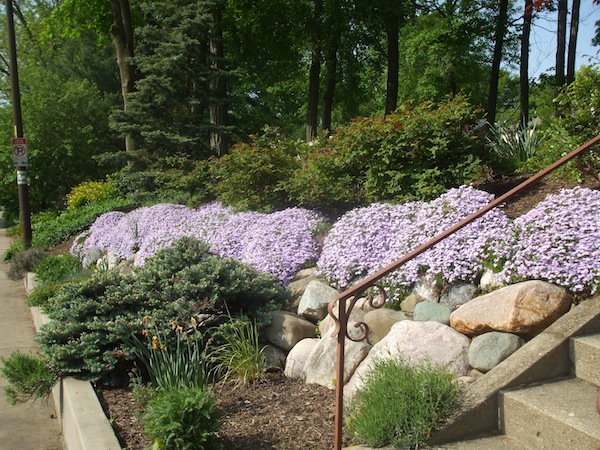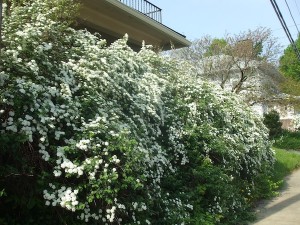
Creeping phlox. (C) Jo Ellen Meyers Sharp
I never have to look outdoors to know what’s blooming. The customers at the garden center where I work part time keep me informed.
They come in and ask for the plants they see blooming. Here’s what’s on the hit list this year.
Creeping phlox (Phlox subulata), a low-growing evergreen ground cover that has had a splendid spring. This perennial does best in full sun and well-drained soil. Once established, this North America native plant is drought tolerant. Creeping phlox retains its needle-like leaves all winter. It gets about 6 inches tall with a 24 inch spread. Plant in rock gardens, in the front of a flower bed or border, along walls and slopes or as a carpet of color under trees and shrubs. Shear off spent flowers to tidy up the plant in spring.
Cascading branches of white flowers on bridal veil spirea (Spiraea vanhouttei) spur interest in this old-fashion, easy-care shrub. This was in my yard and all over the neighborhood where I grew up. It remains a staple in older neighborhoods today, but can be hard to find, so ask your garden center to order it. Bridal veil spirea does fine in part shade to full sun. It can get up to 10 feet tall and 20 feet wide, so make sure to give it room. If this needs to be pruned, do so right after it is done blooming.

Bridal veil spirea. (C) Jo Ellen Meyers Sharp
I’m lukewarm on crabapples (Malus) until I see them bloom like they have this spring. And this is the first year that I noticed intense fragrance on this common tree. Look for crabapples that are resistant to the leaf diseases that can plague this tree and for cultivars that hold the fruit through winter for extended interest. Newer cultivars have been grafted on root stock that reduces or eliminates suckering—sprouts coming from the base of the tree, a common complaint about this and other fruit trees.